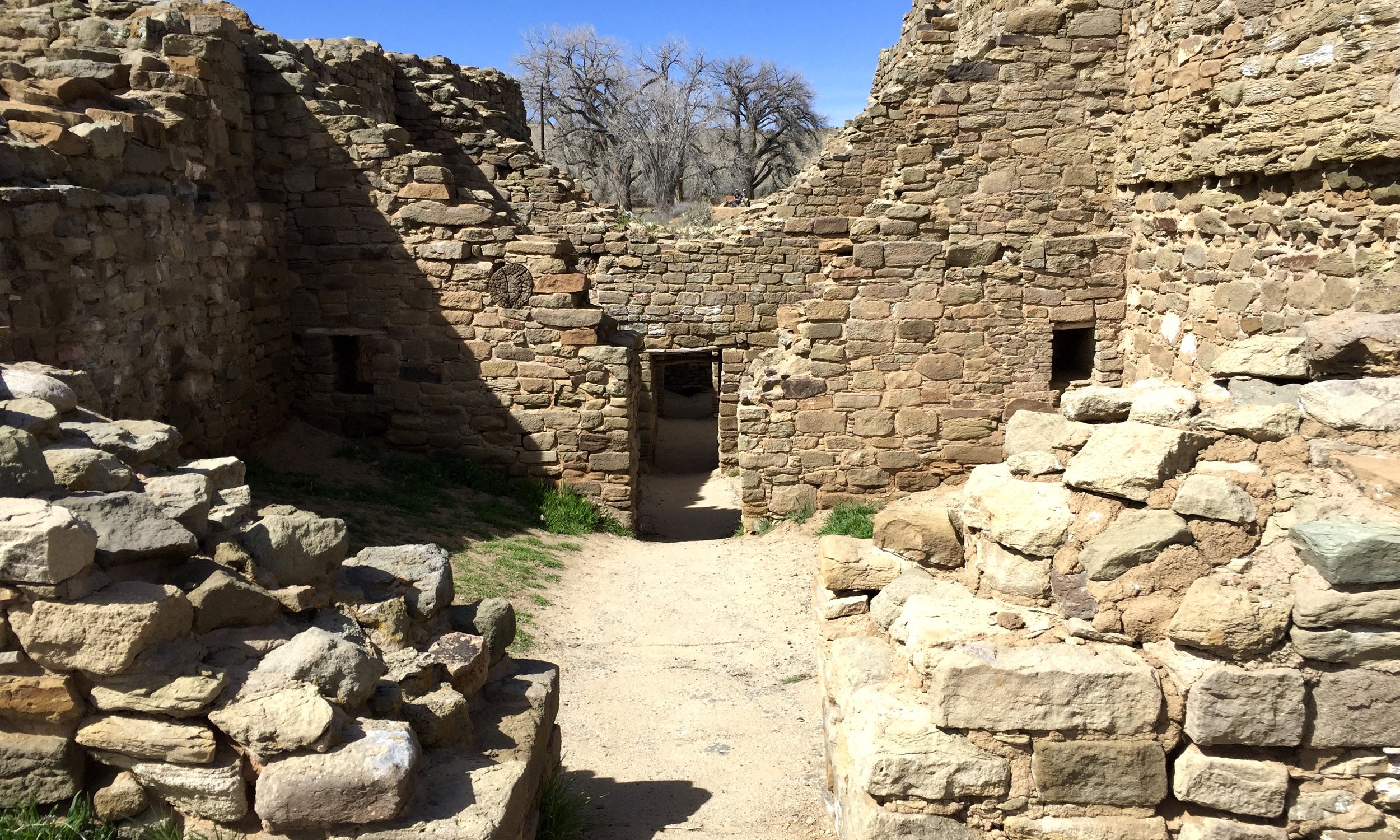
Aztec Ruins National Monument
Aztec Ruins National Monument is an amazing archaeological hidden gem that lets you explore incredible Ancestral Puebloan Ruins and a reconstructed Great Kiva. It is yet another secluded Monument where you’ll find peace and adventure in one unforgettable place. Despite what the name may suggest though, the Aztec did not in fact build these ruins. Although the people who did traded down south with the Mesoamericans of their day. The importance of Aztec to the Chacoan world is up for debate but the evidence is constantly growing that it was Aztec that was the center of Anasazi life after Chaco’s influence wained. More on that coming soon in my history podcast.




The short trail takes you from the Visitor Center to the reconstructed Great Kiva, which is the largest in North America, where you’ll be able to enter and get a feel for how the site may have looked when it was in its prime. It is a reverent place and a nice spot for contemplation so treat it with respect while exploring it.




After the Great Kiva, the trail takes you to a ruined kiva before letting you explore some of the West Ruins halls and doorways of its over 400 rooms.








You’ll notice that the wooden beams are original and the T-shaped doors are quite prevalent! This place was a Chacoan Outlier and it shows some of the influences.




You can then walk to the Hubbard Tri-wall Site which has been backfilled for better preservation but from the trail you can see the backside of the West Ruin and get a feel for the surrounding landscape.


On the way back to the Visitor Center be sure to notice the amazing and beautiful masonry that adorns the walls of the Ruins.
If you’re interested in the unique and exciting history of Chaco Culture National Historical Park and the surrounding Four Corners Area, listen to my history podcast which details in depth, the people, their culture, and the landscape. I have an entire series, starting with the Ice Age and going right up to the Spanish which covers the Anasazi, Ancestral Puebloans, Mesa Verdeans, Mogollon, Hohokam, and of course, the Chacoans.


